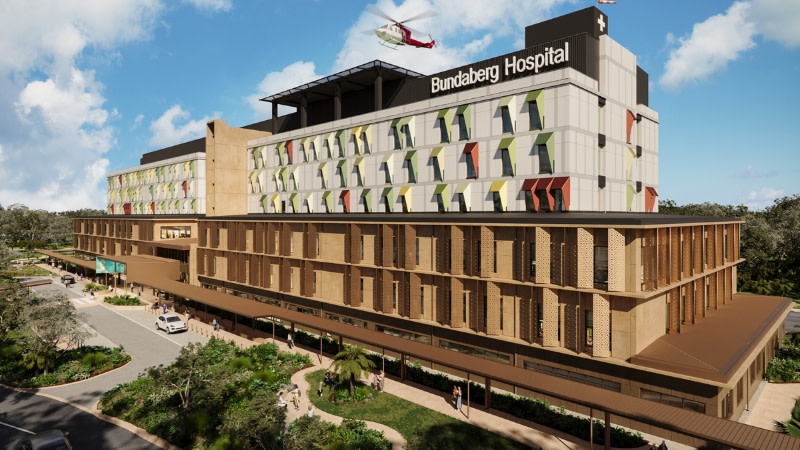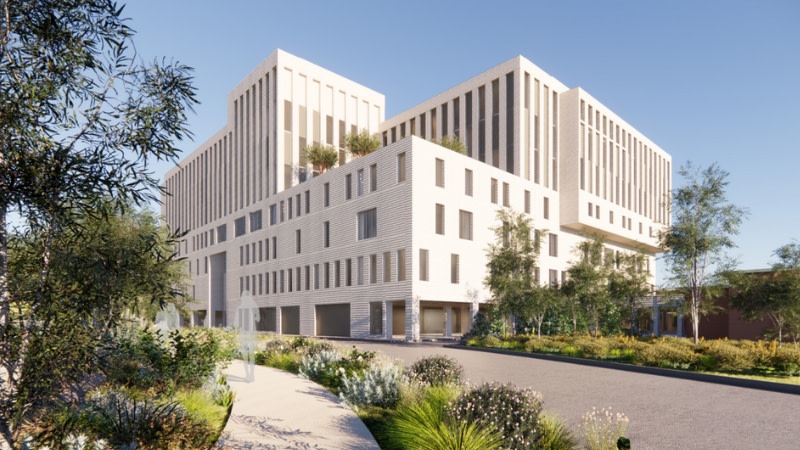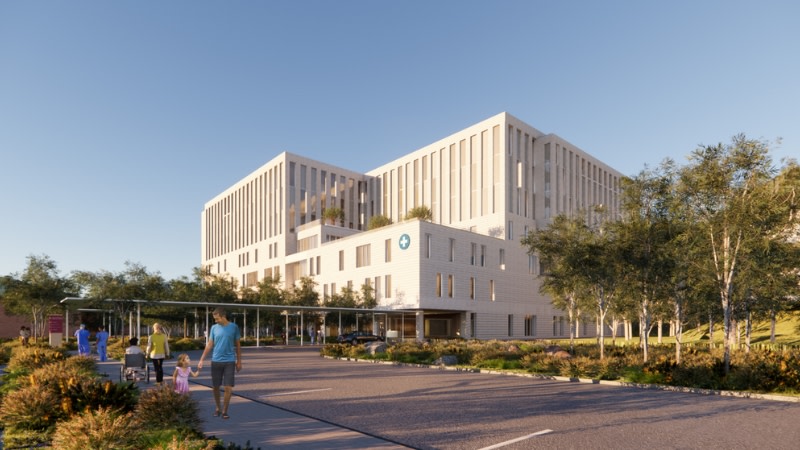Regional Hospitals Push Construction Pipeline Further

The first look designs for a $1.2-billion hospital in regional Queensland’s rum country and the concept for the $558-million campus hospital on the NSW-Victoria border have been unveiled.
The reveals came as hospital assets continue to be the biggest contributor to the total building construction pipeline in Australia, according to Oxford Economics Australia.
The new Bundaberg Hospital plans show a six-storey development across half of a 53.36ha site at Bundaberg Ring Road next to the airport.
Billard Leece Partnership was working in the CPB Contractors consortium, which had nearly completed the design development phase of the project.
It was part of the $9.78-billion Capacity Expansion Program that is part of the Queensland Health and Hospitals Plan.
BLP was the lead architectural designer on the project in collaboration with COX Architecture.

Construction of the facility was expected to start this year and be completed by the end of 2027.
Meanwhile, the Albury Wodonga Regional Hospital project was also progressing with the release of the Hassell-designed scheme.
The plans included a seven-storey clinical services building, two-storey north-east building and multi-storey carpark at the site of the existing regional hospital.

The NSW, Victorian and Australian governments all contributed to the project to produce one of the largest regional hospitals across both states.
Johnstaff Projects was the project manager and the builder would soon be appointed with construction scheduled to be completed by 2028.
Oxford Economics Australia report author Timothy Hibbert said all major states were working through a period of hospital asset renewal as seen in the Building in Australia research.
“Despite delays and uncertainty surrounding state government finances, the public pipeline remains plump, with recent state budgets delivering few surprises,” Hibbert said.
“Health building is set to be the standout.”

The head of property and building forecasting said all states were undertaking very large $500-million-plus developments; at the same time population growth is placing pressure on social infrastructure.
“From a weakened base, national total building construction is forecast to climb 39 per cent over the four years to 2029, reaching a record $169.3 billion [constant FY2022 prices],” Hibbert said.
“While we will continue to experience a dwelling stock deficiency, activity will inevitably recover in the residential sector.
“All build forms will contribute, driving total dwelling commencements to a new record level by the end of the decade.
“Recovery in non-residential is due from 2026, led by hospital asset renewals and a strong pipeline of data centre builds.”














